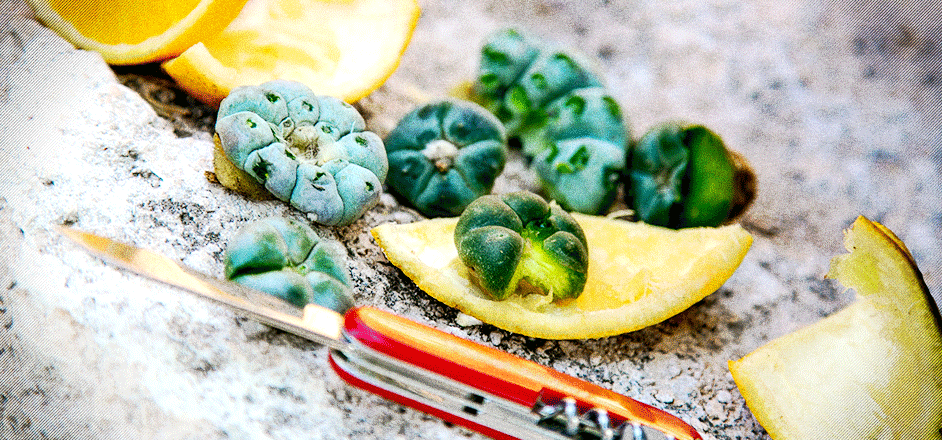If the American dream was still alive in this country, our garden stores would sell peyote cactuses.
Why not? It is a native plant, after all. Peyote doesn’t produce any addictive chemical compounds, the compounds it does produce have therapeutic and medicinal potential, and it looks cool – it flowers, like any other cactus, and it’s fun to grow.
It shouldn’t make any difference to the feds at all. Especially considering that there are several other legal cactus species, growing in households and garden stores all over America, that are just as powerfully psychedelic as peyote…
Yes. They’re out there. They’re legal. And they’re full of mescaline. Which, is what really matters, when it comes to peyote, anyway.
Mescaline (the psycho-active ingredient in peyote) was one of the favorite psychedelics of the 60’s and 70’s. Jim Morrison, Hunter Thompson, Aldous Huxley, and many other pop-culture figures raved about the spiritually weird powers of “Big Chief”. But its history of use in the Americas goes way back before that – back some 5500-6000 years among native tribes and civilizations.
Mescaline has been the preferred method for tripping nuts in these parts for the better part of modern history.
And here’s the thing: peyote is not the only cactus that produces mescaline. There are in fact, three other species, all native to the Americas, which produce high levels of that magic little molecule, and that you can get your hands on both easily and for cheap:
The San Pedro cactus (Echonopsis pachanoi), the Peruvian torch (Echinopsis peruviana), and the Bolivian torch (Echinopsis lageniformis).
All totally legal to own and grow. All very common.
Because these three cacti never gained the hippie-dippy fame that peyote did, they fell through the cracks of prohibition. Retaining their legal status and remaining on the shelves of garden stores and in living rooms and yards across America straight into the modern day; despite being chock full of a schedule I psychedelic.
And they have certain qualities that make them even more useful than peyote, for the curious psychonaut. Because, peyote, as a plant, is a very slow growing substance, each button taking up to three years to reach maturity. It is not an easy (or legal) cactus to grow, nor is it easy to find in the wilderness: it is small, and it requires several peyote buttons to get enough mescaline to achieve a single dose.
San Pedro, Bolivian and Peruvian torch in contrast, are very fast growing, grow naturally all over North, Central and South America, they can get as big as trees – full of mescaline – and you can grow them right in your front yard if you want to, without any fear of legal repercussions. They are also very easy to make more of – or, to propagate.
Cactuses are incredibly hardy plants, and can be cloned simply by cutting them and planting that cutting straight into the soil. That cutting will grow roots, and eventually start growing into a new cactus. It’s an evolutionary mechanism for reproduction and survival, and one that makes propagation extremely easy.
A cutting of any one of these cactuses costs around $20 a piece, and they come in sections of about twelve inches in length (which, coincidentally, is the necessary amount for a single dose of mescaline). There are several reliable companies out there where you can buy these “landscape only” cacti, like the San Pedro Cactus Sales company, or TheSucculentSource.com.
Or, just check your local nurseries and greenhouses – it is not beyond the realm of possibility to find a San Pedro, Bolivian or Peruvian torch somewhere in their inventory.
So, maybe the American dream is still alive out there, after all. At least those parts of it that The State has somehow overlooked.
That's some kind of reason for American psychonauts to remain optimistic.
(Originally published on October 31, 2018)



Leave a Reply